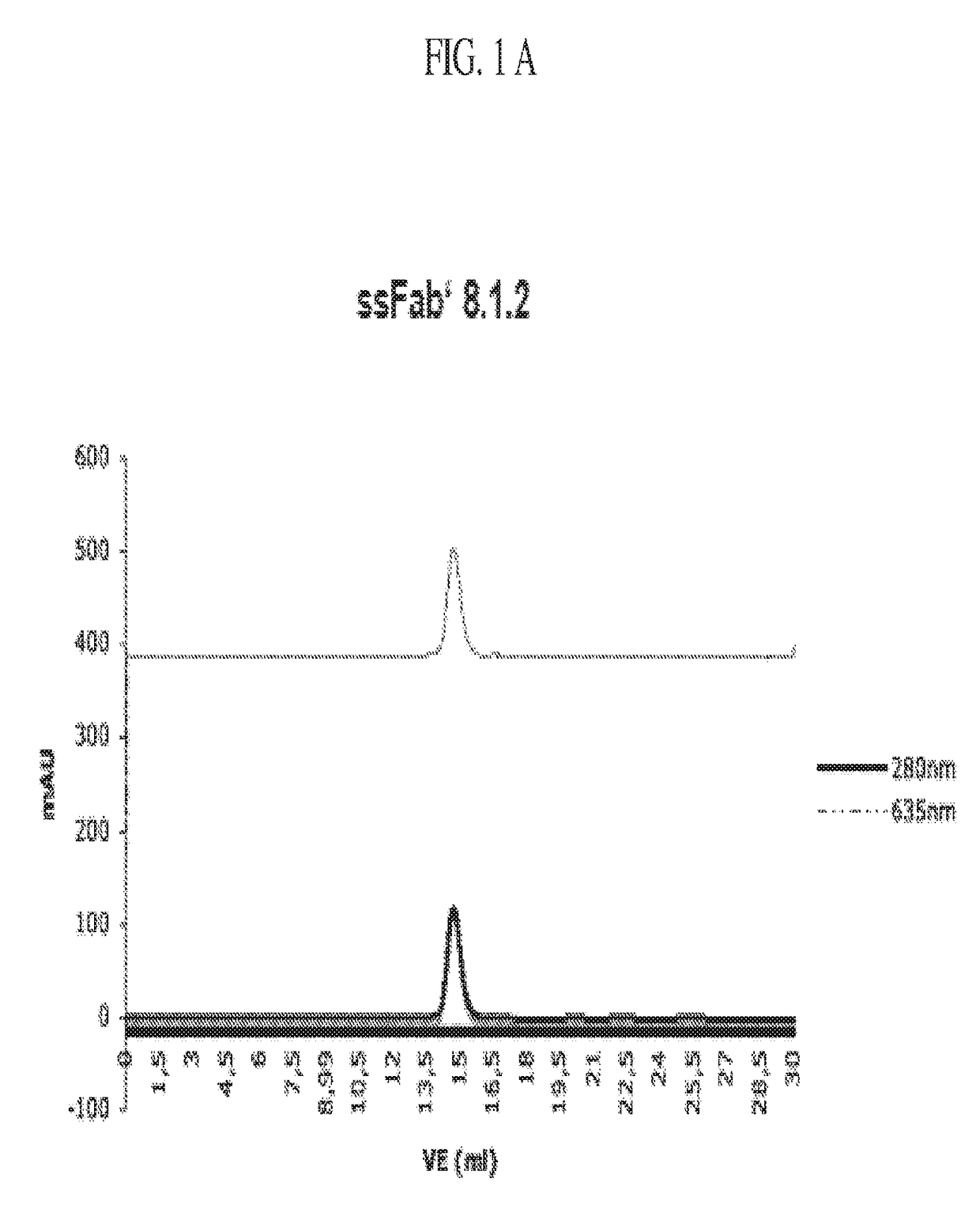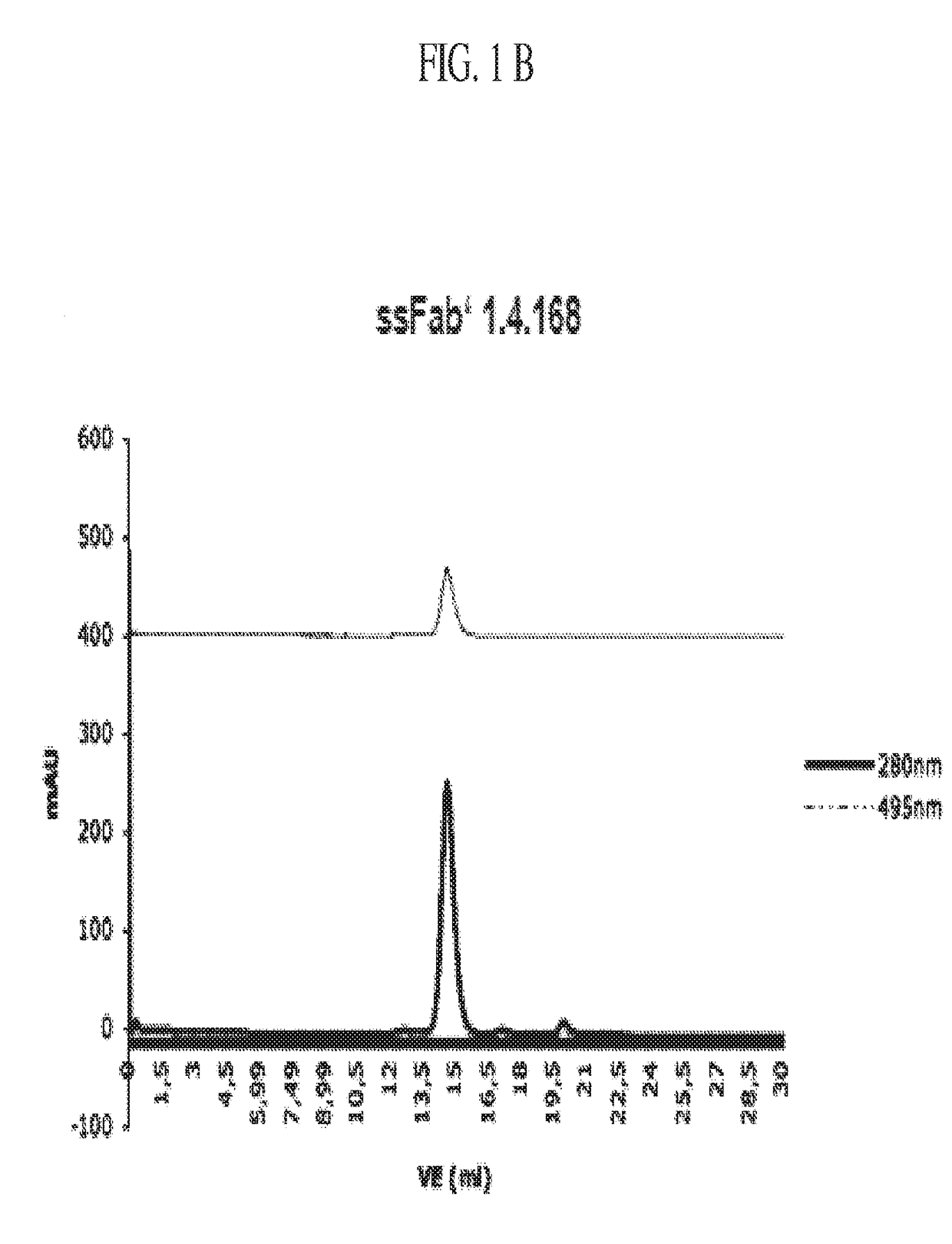Detection of a polypeptide dimer by a bivalent binding agent
a polypeptide dimer and bivalent binding technology, applied in the field of bivalent binding agents, can solve the problems homo- or heterodimer detection of such receptor molecules, and achieve the effect of solving the problem of a single, non-dimerized background of single molecules
- Summary
- Abstract
- Description
- Claims
- Application Information
AI Technical Summary
Benefits of technology
Problems solved by technology
Method used
Image
Examples
embodiment 1
2. The bivalent binding agent of embodiment 1, wherein at least one of the monovalent binders is a single chain antibody, or an Fab-fragment or an Fab′-fragment of a monoclonal antibody.
3. The bivalent binding agent of embodiment 1, wherein both the monovalent binders are derived from monoclonal antibodies and are Fab-fragments, or Fab′-fragments, or an Fab-fragment and an Fab′-fragment.
4. The bivalent binding agent according to any of embodiments 1 to 3, wherein said bivalent binding agent has a Kdiss of 10−5 / sec or less.
5. The bivalent binding agent according to any of embodiments 1 to 4, wherein the linker has a length of 6 to 100 nm.
6. The bivalent binding agent according to any of embodiments 1 to 5, wherein the linker is an L-DNA-linker.
7. A method for obtaining a bivalent binding agent that specifically binds a polypeptide dimer, the method comprising the steps of a) selecting a first monovalent binder that binds to an epitope of a first target polypeptide comprised in said d...
embodiment 7
8. The method of embodiment 7, wherein said linker is L-DNA.
9. The method of embodiments 7 or 8 further comprising the step e) of isolating the bivalent binding agent.
10. The bivalent binding agent according to any of embodiments 1 to 6 or the method according to any of embodiments 7 to 9, wherein the polypeptide dimer is a homodimer.
11. The bivalent binding agent according to embodiments 10, wherein both monovalent binders bind to an overlapping epitope.
embodiment 10
12. The bivalent binding agent , wherein both monovalent binders bind to the same epitope.
13. The bivalent binding agent according to any of embodiments 1 to 6 or the method according to any of embodiments 7 to 9, wherein the polypeptide dimer is a heterodimer.
14. A histological staining method for a polypeptide dimer the method comprising the steps of[0241]a) providing a cell or tissue sample,[0242]b) incubating said sample with a bivalent binding agent capable of binding a polypeptide dimer the binding agent consisting of two monovalent binders that are linked to each other via a linker, wherein the first monovalent binder binds to an epitope of a first target polypeptide comprised in said dimer, wherein the second monovalent binder binds to an epitope of a second target polypeptide comprised in said dimer, wherein each monovalent binder has a Kdiss in the range of 5×10−3 / sec to 10−4 / sec, and wherein the bivalent binding agent has a Kdiss of 3×10−5 / sec or less and[0243]c) detectin...
PUM
| Property | Measurement | Unit |
|---|---|---|
| length | aaaaa | aaaaa |
| molar ratio | aaaaa | aaaaa |
| length | aaaaa | aaaaa |
Abstract
Description
Claims
Application Information
 Login to View More
Login to View More - R&D
- Intellectual Property
- Life Sciences
- Materials
- Tech Scout
- Unparalleled Data Quality
- Higher Quality Content
- 60% Fewer Hallucinations
Browse by: Latest US Patents, China's latest patents, Technical Efficacy Thesaurus, Application Domain, Technology Topic, Popular Technical Reports.
© 2025 PatSnap. All rights reserved.Legal|Privacy policy|Modern Slavery Act Transparency Statement|Sitemap|About US| Contact US: help@patsnap.com



